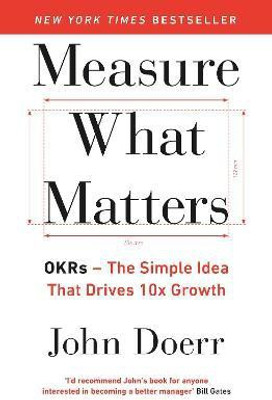
FUNDAMENTAL OF ELECTRICAL ENGINEERING K Scheme (II - Electrical - 312310) (Paperback, U. A. BAKSHI)
Share
FUNDAMENTAL OF ELECTRICAL ENGINEERING K Scheme (II - Electrical - 312310) (Paperback, U. A. BAKSHI)
Be the first to Review this product
₹150
Available offers
T&C
T&C
Delivery
Check
Enter pincode
Delivery by23 Jun, Monday|₹55
?
View Details
Highlights
- Binding: Paperback
- Publisher: TECHNICAL PUBLICATIONS
- Genre: EDUCATIONAL
- ISBN: 9789355855015, 9355855015
- Edition: FIRST, 2024
- Pages: 84
Services
- Cash on Delivery available?
Seller
Description
Syllabus Fundamental of Electrical Engineering - (312310) Learning Scheme Credits Assessment Scheme Actual Contact Hrs./Week SLH NLH Paper Duration Theory Based on LL & TL Based on SL Total Marks CL TL LL Practical FA-TH SA-TH Total FA-PR SA-PR SLA Max Max Max Min Max Min Max Min Max Min 4 - 4 2 10 5 3 30 70 100 40 25 10 25 10 25 10 175 Sr. No. Theory Learning Outcomes(TLO's) aligned to CO's. Learning content mapped with Theory Learning Outcomes (TLO's) and CO's. 1. TLO 1.1 Interpret the given electric parameters. TLO 1.2 Explain the given terms of electric circuit. TLO 1.3 Explain the given effect of the electric current. TLO 1.4 Calculate work, power and energy for the given circuit. Unit - I Basic Electrical Parameters 1.1 Direct Current (DC),Alternating Current(AC), Voltage Source and Current Source : Ideal and Practical. 1.2 Electric Current, Electric Potential, Potential Difference(PD), Electro-Motive Force(EMF). 1.3 Electrical Work, Power and Energy. 1.4 Resistance, Resistivity, Conductivity, Effect of Temperature on Resistance. 1.5 Types of Resistor and their application. 1.6 Heating Effect, Magnetic Effect, Chemical Effect of Electric current. (Chapter - 1) 2. TLO 2.1 Apply Ohm’s law to calculate internal resistance of the given circuit. TLO 2.2 Calculate equivalent resistance for the given circuit. TLO 2.3 Categorize the given type of network TLO 2.4 Apply the Kirchhoff’s current law and Kirchhoff’s voltage law to calculate the electrical quantities in the given circuit. Unit - II D.C. Circuits 2.1 Ohm’s Law, Internal resistance of source, internal voltage drop, Terminal Voltage. 2.2 Resistance in Series, Resistance in Parallel.(Theory and Numerical) 2.3 Active, Passive, Linear, Non-linear Circuit, Unilateral Circuit and Bi-lateral Circuit, Passive and Active Network, Node, Branch, Loop, Mesh. 2.4 Comparison of Kirchhoff’s Current Law, Kirchhoff’s Voltage Law (Simple numericals). (Chapter - 2) 3. TLO 3.1 Describe the construction of the given type of capacitor. TLO 3.2 Explain the working of the capacitor in the given circuit. TLO 3.3 Calculate equivalent capacitance in the given D.C. circuit. TLO 3.4 Define Battery and state its types and connections. TLO 3.5 Plot charging and discharging curves for the given capacitor and battery. Unit - III Capacitors and Battery 3.1 Capacitor, it’s construction, Parallel Plate Capacitor. 3.2 Various connections of capacitor. 3.3 Energy Stored in Capacitor. 3.4 Charging and Discharging of Capacitor. 3.5 Breakdown voltage and Di-electric strength. 3.6 Applications of Capacitor. 3.7 Types of battery, Construction, series and parallel connection of Battery. 3.8 Charging and Discharging of Capacitor and battery. (Chapter - 3) 4. TLO 4.1 Interpret the terms related to a magnetic circuit. TLO 4.2 Calculate various parameters of the given magnetic circuit. TLO 4.3 Compare the series and parallel magnetic circuit based on the given criteria. TLO 4.4 Plot B-H curve and hysteresis loop of the given magnetic materials. Unit - IV Magnetic Circuits 4.1 Magnetic lines of force, Flux, Flux density, Magnetic flux intensity. 4.2 Magneto-Motive-Forces (MMF), Ampere Turns (AT), Reluctance, Permeance, Reluctivity. 4.3 Electric and Magnetic circuit : Series Magnetic and Parallel Magnetic Circuit. 4.4 Magnetization Curve (B-H Curve). 4.5 Magnetic Hysteresis, Hysteresis Loop, Applications. (Chapter - 4) 5. TLO 5.1 Describe the use of Faraday’s laws of electromagnetic induction in the given application. TLO 5.2 Distinguish between the given type of e.m.fs. TLO 5.3 Apply Faraday’s laws to calculate induced e.m.f. in the given circuit. TLO 5.4 Calculate self-inductance and energy stored in the magnetic field of the given circuit. Unit - V Electromagnetic Induction 5.1 Development of Induced e.m.f. and Current, Faraday’s Laws of Electromagnetic Induction. 5.2 Static and dynamic emf, Lenz’s Law, Fleming’s Right hand rule. 5.3 Self Inductance, Coefficient of Self-inductance (L), Mutual inductance, Coefficient of Mutual inductance (M), self induced e.m.f. and mutually induced e.m.f, Coefficient of Coupling. 5.4 Inductance in series. 5.5 Types of inductor, their application and Energy Stored in Magnetic Field. (Chapter - 5)
Read More
Specifications
Book Details
| Publication Year |
|
| Book Type |
|
| Number of Pages |
|
University Books Details
| Stream |
|
| Degree/Diploma |
|
| Specialization |
|
Additional Features
| Age Group |
|
Be the first to ask about this product
Safe and Secure Payments.Easy returns.100% Authentic products.
Back to top




